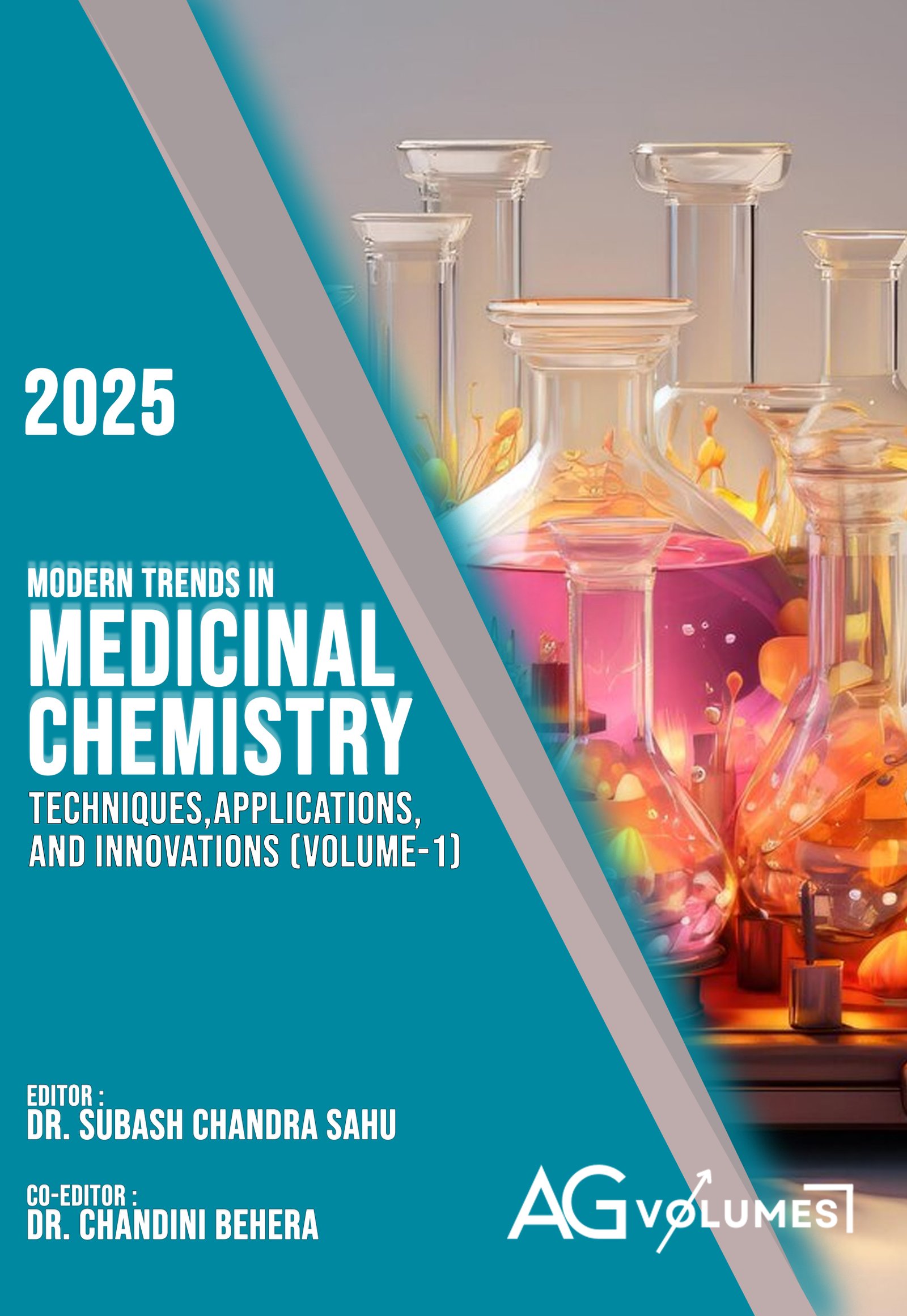Targeted Drug Delivery Systems: Current Trends and Future Prospects
Keywords:
Targeted drug delivery systems (TDD), Diagnosis and treatment of diseases, Nanomaterial-based drug delivery systems (NBDDS), Active and passive targeting, Conventional drug delivery systems (DDS), NanocarriersAbstract
The majority of dosage forms available today have subpar biopharmaceutical and pharmacokinetic qualities. In order to prevent harm to other tissues or organs, a suitable "drug delivery system" that delivers the active drug molecule only to the site of action has to be created. A technique for giving medications to patients at the intended location or site of action is called targeted drug delivery. Targeted drug delivery is one of the most innovative approaches to sickness diagnosis and treatment in the medical sciences. Review the many studies on current developments and potential future directions in targeted drugs delivery systems in this article. The review found that TDD improves treatment effectiveness by reducing side effects and dose requires. To improve medication transport and release, a variety of carriers have been investigated, including as nanoparticles, liposomes, micelles, and biodegradable polymers. Effectively targeting many tumour locations is still a difficulty in cancer therapy, despite attempts to create highly selective delivery methods. It is expected that as TDD systems develop, they will play a bigger part in treating complicated illnesses including cancer, neurological problems, and autoimmune issues, opening up new possibilities in precision medicine.
References
[1] D. P. B, A. K. R, and P. K. C, "A REVIEW ON TARGETED DRUG DELIVERY SYSTEM," Asian J. Pharm. Technol., vol. 8, no. 1, pp. 57-64, 2023,https://doi.org/10.52711/2231-5713.2023.00012
[2] P. Kshatriya and P. Richhariya, "Enhancing Diabetes Detection Accuracy using an Ensemble Model of Random Forest and SVM," pp. 30-38, 2023.
[3] S. Sun et al., "Current perspectives and trends in nanoparticle drug delivery systems in breast cancer: bibliometric analysis and review," Front. Bioeng. Biotechnol., vol. 11, no. September, pp. 1-27, 2023,https://doi.org/10.3389/fbioe.2023.1253048
[4] K. Saini and P. Richhariya, "Enhanced Brain Tumor Classification using VGG19 and Data Augmentation Techniques," pp. 18-26, 2023.
[5] C. Li et al., "Recent progress in drug delivery," Acta Pharm. Sin. B, vol. 9, no. 6, pp. 1145-1162, 2019,https://doi.org/10.1016/j.apsb.2019.08.003
[6] W. Ahmad, T. Khan, I. Basit, and J. Imran, "A Comprehensive Review on Targeted Drug Delivery System," 2022.https://doi.org/10.52711/2231-5691.2022.00053
[7] H. Tian, F. Zhao, Q. rui Qi, B. sen Yue, and B. tao Zhai, "Targeted drug delivery systems for elemene in cancer therapy: The story thus far," Biomed. Pharmacother., vol. 166, no. July, p. 115331, 2023,https://doi.org/10.1016/j.biopha.2023.115331
[8] N. S. N, W. R. D, C. M. J, B. R. V, and V. S. S. M, "A Review On Targeted Drug Delivery," Am. J. PharmTech Res., vol. 8, no. 4, pp. 1-11, 2018,https://doi.org/10.46624/ajptr.2018.v8.i4.001
[9] S. P. Dunuweera, R. M. S. I. Rajapakse, R. B. S. D. Rajapakshe, S. H. D. P. Wijekoon, M. G. G. S. Nirodha Thilakarathna, and R. M. G. Rajapakse, "Review on Targeted Drug Delivery Carriers Used in Nanobiomedical Applications," Curr. Nanosci., vol. 15, no. 4, pp. 382-397, 2018,https://doi.org/10.2174/1573413714666181106114247
[10] J. K. Patra et al., "Nano based drug delivery systems: Recent developments and future prospects," J. Nanobiotechnology, vol. 16, no. 1, pp. 1-33, 2018,https://doi.org/10.1186/s12951-018-0392-8
[11] K. Prabahar, Z. Alanazi, and M. Qushawy, "Targeted drug delivery system: Advantages, carriers and strategies," Indian J. Pharm. Educ. Res., vol. 55, no. 2, pp. 346-353, 2021,https://doi.org/10.5530/ijper.55.2.72
[12] S. P. MAHAPARALE and J. U. DESHMUKH, "REVIEW ON: TARGETED DRUG DELIVERY," Am. J. PharmTech Res., vol. 8, no. 4, pp. 1-11, 2020,https://doi.org/10.46624/ajptr.2018.v8.i4.001
[13] N. D. Alshammari et al., "Advancements in Colon-Targeted Drug Delivery: A Comprehensive Review on Recent Techniques with Emphasis on Hot-Melt Extrusion and 3D Printing Technologies," AAPS PharmSciTech, vol. 25, no. 7, pp. 1-23, 2024,https://doi.org/10.1208/s12249-024-02965-w
[14] H. Tiwari et al., "Recent Advances in Nanomaterials-Based Targeted Drug Delivery for Preclinical Cancer Diagnosis and Therapeutics," Bioengineering, vol. 10, no. 7, pp. 1-30, 2023,https://doi.org/10.3390/bioengineering10070760
[15] X. Cheng, Q. Xie, and Y. Sun, "Advances in nanomaterial-based targeted drug delivery systems," Front. Bioeng. Biotechnol., vol. 11, no. April, pp. 1-27, 2023,https://doi.org/10.3389/fbioe.2023.1177151
[16] N. Mumtaz, M. Imran, A. Javaid, S. Latif, N. Hussain, and L. Mitu, "Nanomaterials for Targeted Drug Delivery through Skin to Treat Various Diseases: Recent Trends and Future Perspective," J. Chem., vol. 2023, 2023,https://doi.org/10.1155/2023/3861758
[17] J. Li et al., "Recent Advances in Targeted Drug Delivery Strategy for Enhancing Oncotherapy," Pharmaceutics, vol. 15, no. 9, 2023,https://doi.org/10.3390/pharmaceutics15092233
[18] A. Kumar, U. Nautiyal, C. Kaur, V. Goel, and N. Piarchand, "Targeted Drug Delivery System : Current and Novel Approach," Int. J. Pharm. Med. Res. J., vol. 5, no. 2, pp. 448-454, 2017.
[19] A. Thakur, A. Roy, S. Chatterjee, P. Chakraborty, K. Bhattacharya, and P. P. Mahata, "Recent Trends in Targeted Drug Delivery," Behav. Brain Res., vol. 281, no. November, pp. 1-14, 2015,
[12] S. B. Raj, "Pathways to inclusive higher education: learnings from India's National Education Policy 2020," Nord. J. Stud. Educ. Policy, vol. 00, no. 00, pp. 1-11, 2024,https://doi.org/10.1080/20020317.2024.2382376
[13] S. R. Sethi, "The New Education Policy 2020: Addressing the Challenges of Education in Modern India," vol. VII, no. 2454, pp. 1175-1189, 2023,https://doi.org/10.47772/IJRISS
[14] M. Gonmei, A. P.K., R. Pradhan, and B. Gurramkonda, "Towards Inclusive Education in India: An In-Depth Analysis of NEP 2020 and Its Challenges," Ravenshaw J. Educ. Stud., vol. 12, no. 1, pp. 72-79, 2023, doi: 10.13140/RG.2.2.19726.74569.
[15] H. Pancholi and H. Kumar Maurya, "Inclusive Education regarding NEP-2020: Challenges and Remedies," no. September, pp. 231-238, 2023,https://www.researchgate.net/publication/374813782
[16] S. Panda, "National Education Policy-2020 on Equitable and Inclusive Education," vol. 13, no. 8, pp. 21-23, 2024,https://doi.org/10.35629/7722-1308112115
[17] M. Kumar, "Inclusive Education and National Education Policy 2020: A Review," Shanlax Int. J. Arts, Sci. Humanit., vol. 11, no. S1i2-Nov, pp. 62-66, 2023,https://doi.org/10.34293/sijash.v11iS1i2-Nov.7319




